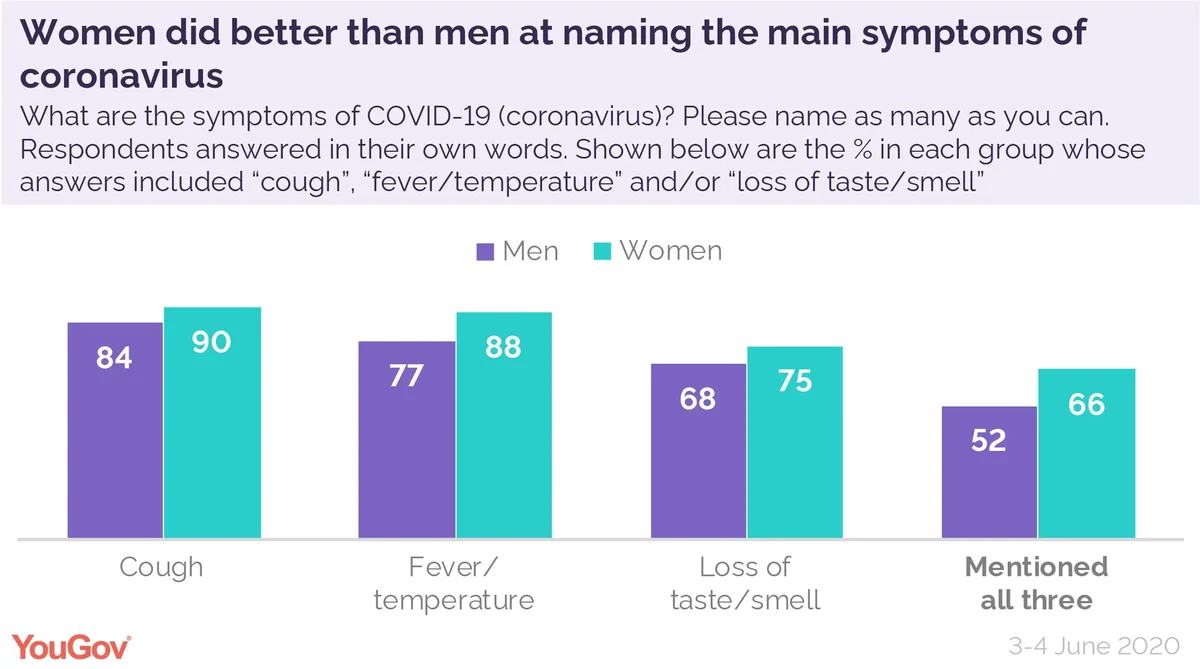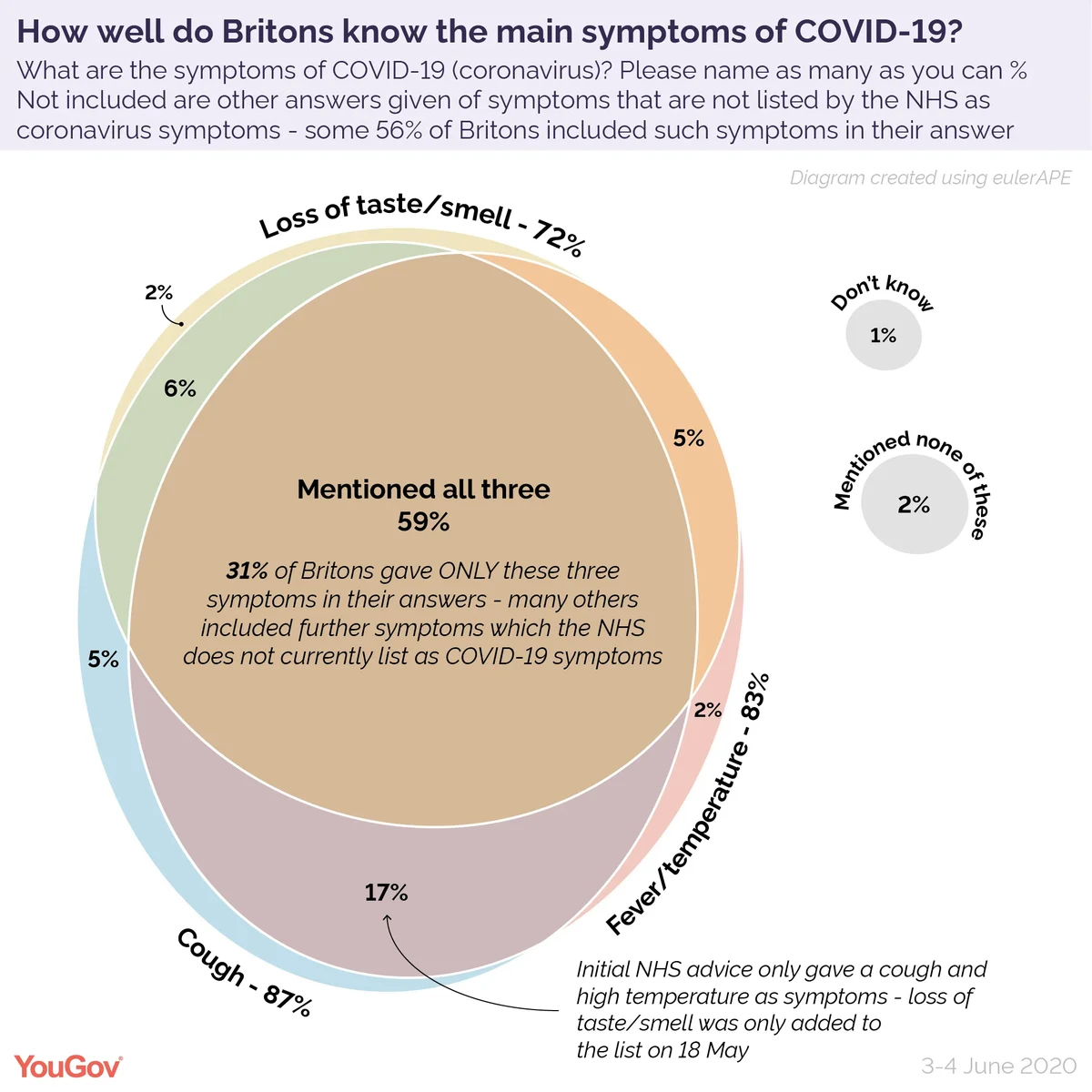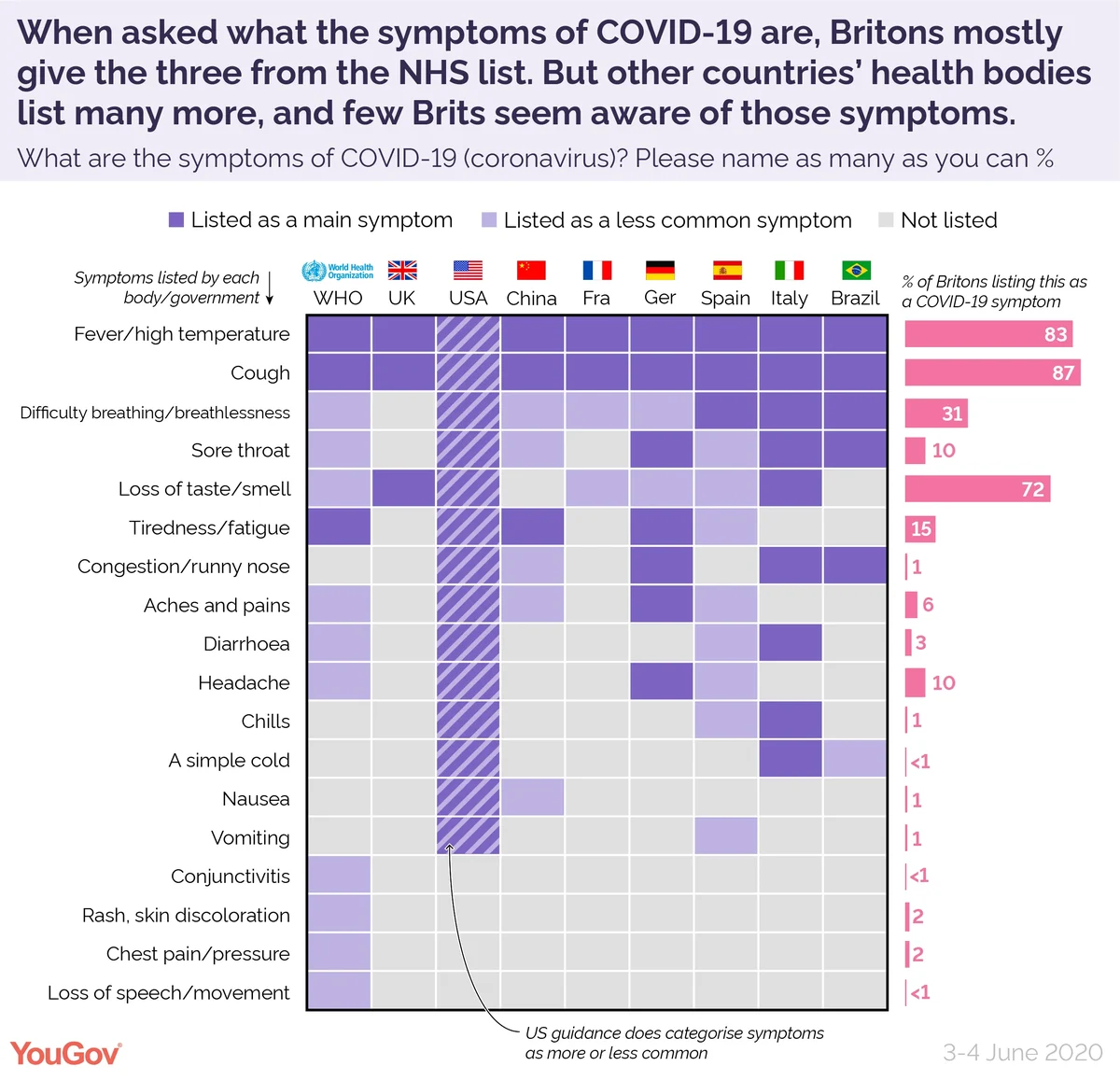Women and the highly educated were better at naming the warning signs of coronavirus
The NHS website currently lists three symptoms for coronavirus: a high temperature, a new, continuous cough and a loss or change to your sense of taste and smell.
Given how vital it is that people are aware of the hallmarks of COVID-19 so they can self-isolate and seek medical advice, we asked Britons what they think the symptoms of coronavirus are. Respondents answered in their own words, which we have categorised below.
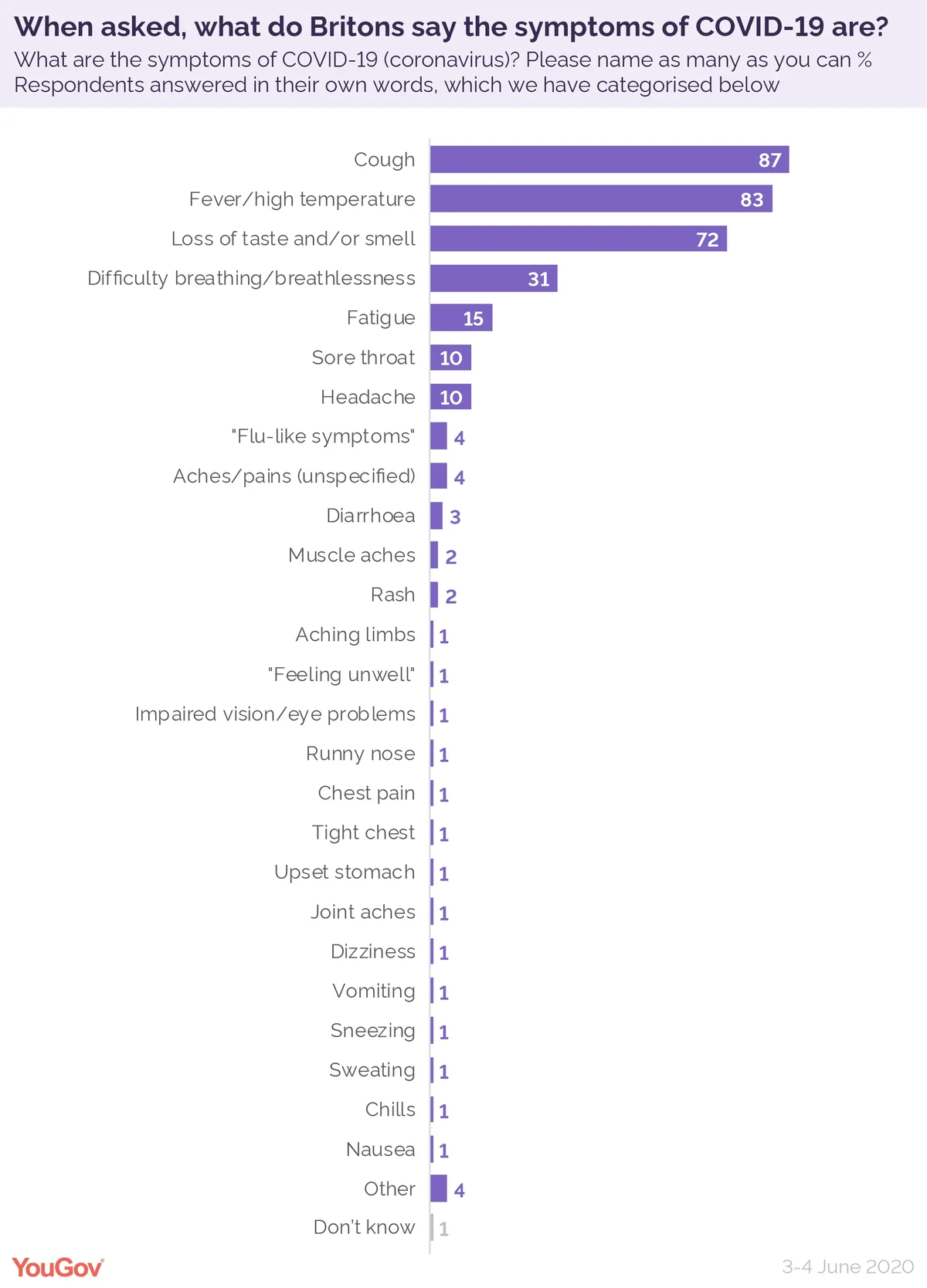
Unsurprisingly the three symptoms the NHS lists are the three most commonly cited. Topping the list is a cough, which 87% of Britons mentioned, followed by the temperature at 83% and then the loss of taste and/or smell at 72%.
A somewhat lower figure mentioned all three in their response, although at 59% this still represents a majority of Britons. A further 17% included the cough and temperature in their answers but not the loss of taste/smell – perhaps understandable as this latter symptom was added to the official list much later than the other two.
Just 2% of Britons gave none of these symptoms in their answers, and another 1% responded “don’t know”.
Many Britons listed other symptoms as well
Only 31% of Britons gave only the three NHS symptoms as their answer – in fact, a majority (56%) included other symptoms in their answer.
They are not necessarily wrong to do so either. Comparing the guidance given by multiple governments across the globe, as well as the World Health Organisation, reveals surprisingly different symptom lists.
While all countries list a cough and high temperature as COVID symptoms, a loss of taste/smell is relegated to a ‘less common’ symptom in France, Germany and Spain, and isn’t included on Brazil’s list at all.
Similarly, the US, Germany, Italy and Brazil all named sore throat and congested or runny nose on their list of main coronavirus symptoms – these symptoms aren’t mentioned in the NHS guidance at all.
Many of the symptoms from other countries’ lists were also brought up by Britons. The most common was difficulty breathing or breathlessness, which close to a third (31%) included. Other relatively commons answers included tiredness/fatigue (15%), headache (10%) and sore throat (also 10%).
Women and the more highly educated are more likely to be able to name the coronavirus symptoms
The more highly-educated Britons are, the more likely they were to give the main NHS-described symptoms in their answers. For instance, while 94% of Britons educated to a high level (undergraduate degree or above) included the coughing symptom, this fell to 86% in the medium group (A-level and similar) and 81% among the low education group (those whose highest qualification is GCSE-level or lower).
Likewise, 87% of the high education group cited fever/temperature, compared to 80% of the low education group, and when it came to the loss of taste or smell 83% of the high education group included it in their answer, a figure which fell to 65% for the low education group.
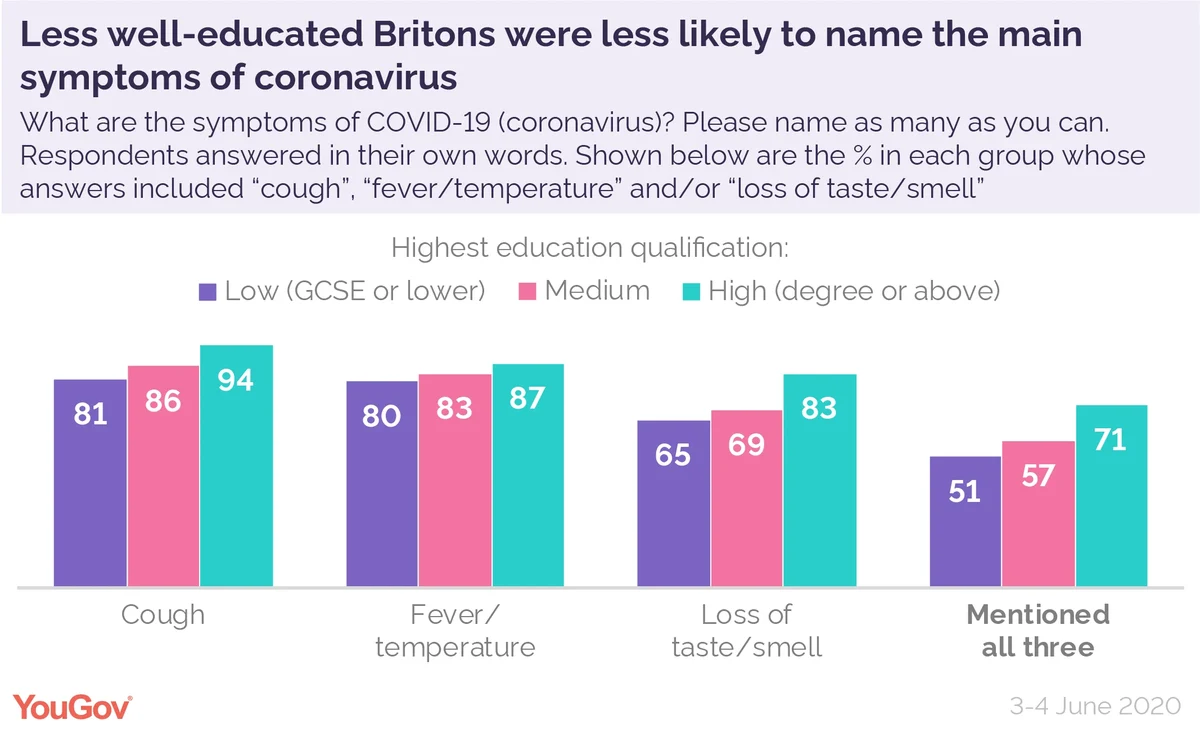
There is a twenty-point gap between the high and low education groups for being able to give all three symptoms: 71% for the high education group, 57% for the medium group and 51% for the low education group.
Women are also more likely than men to be able to recall the three main symptoms as listed by the NHS. Nine in ten women (90%) cited the cough, compared to 84% of men; 88% of women brought up fever/temperature versus 77% of men; and 75% of women included a loss of taste/smell in their answer against 68% of men.
Overall 66% of women named all three NHS coronavirus symptoms, compared to 52% of men.
